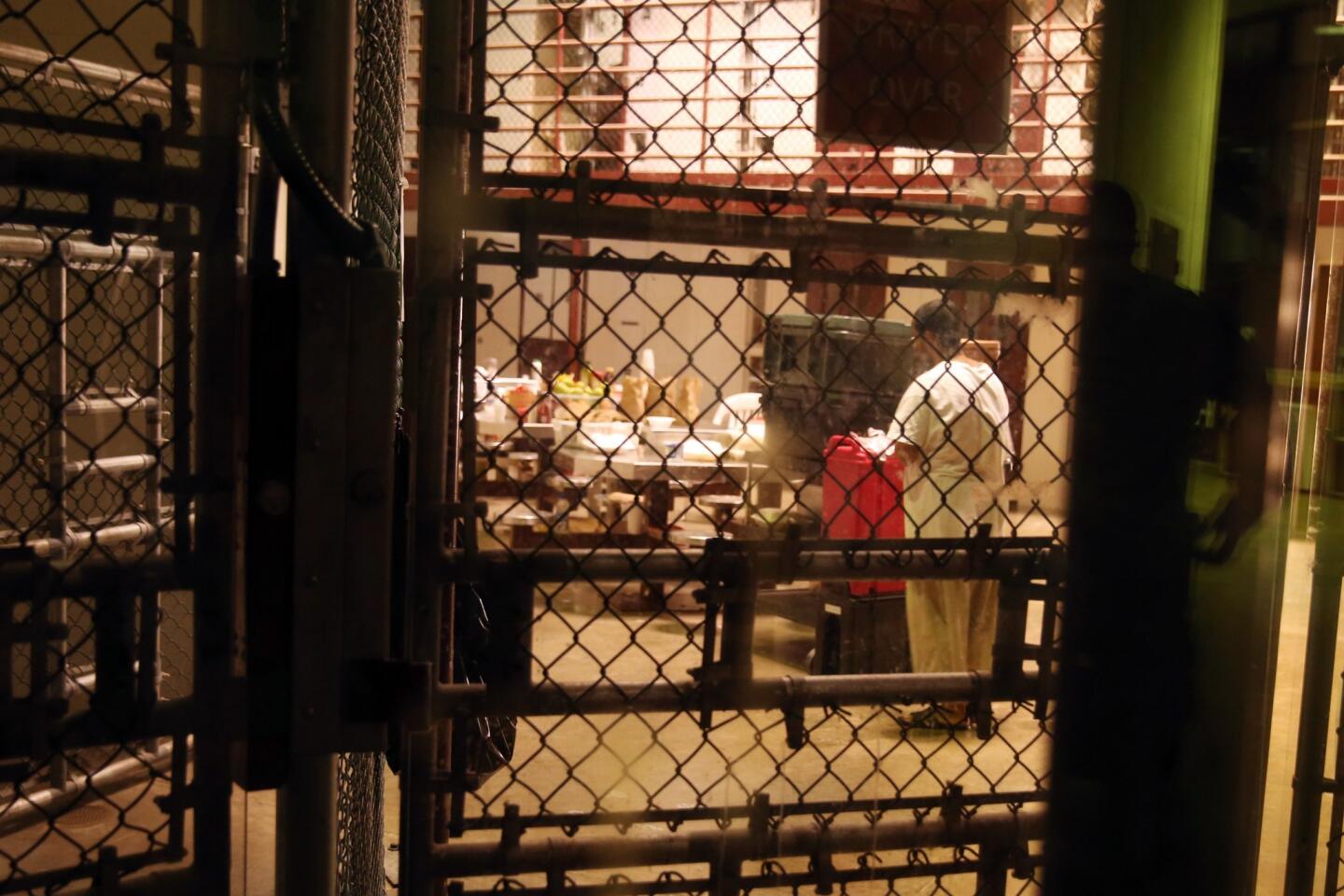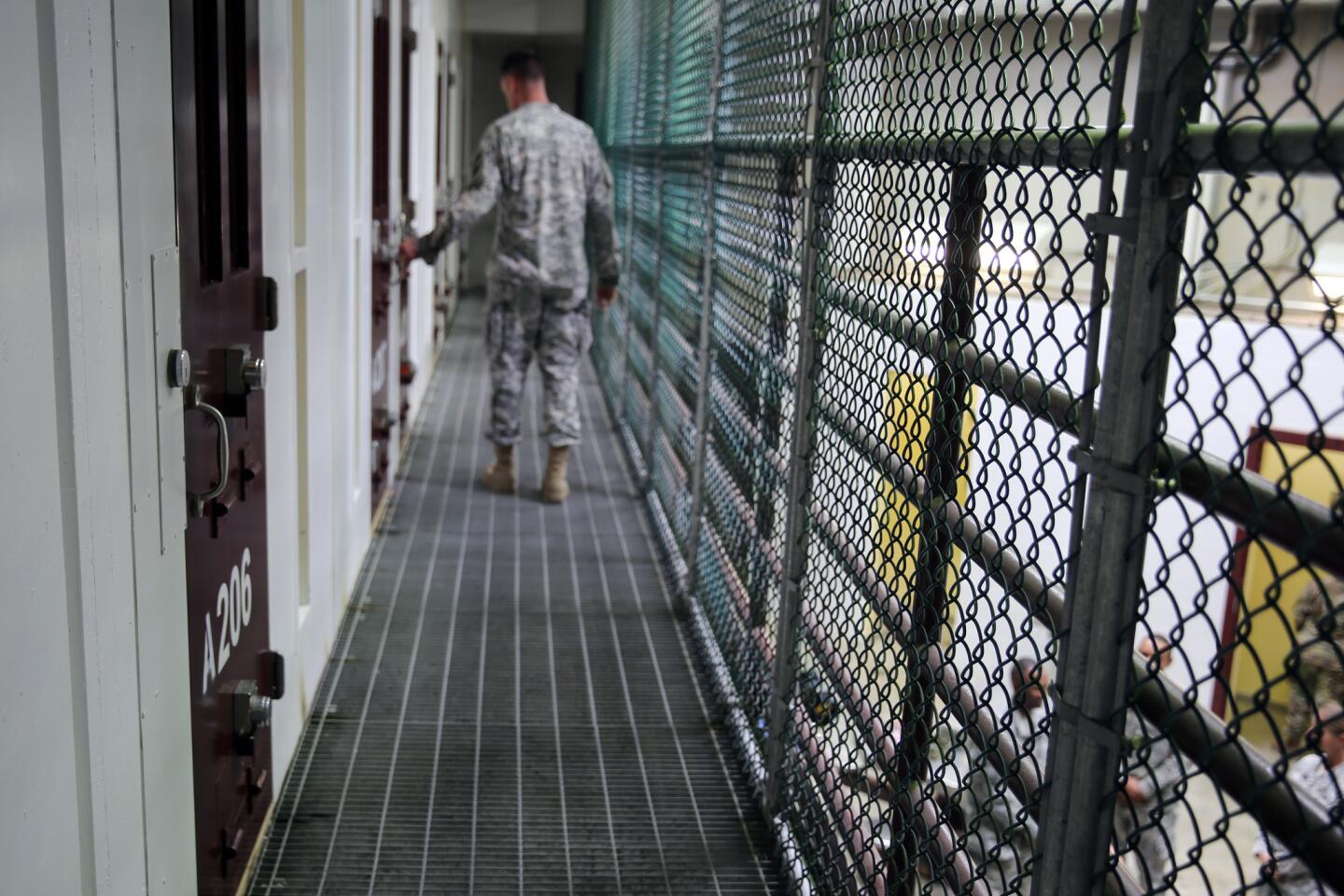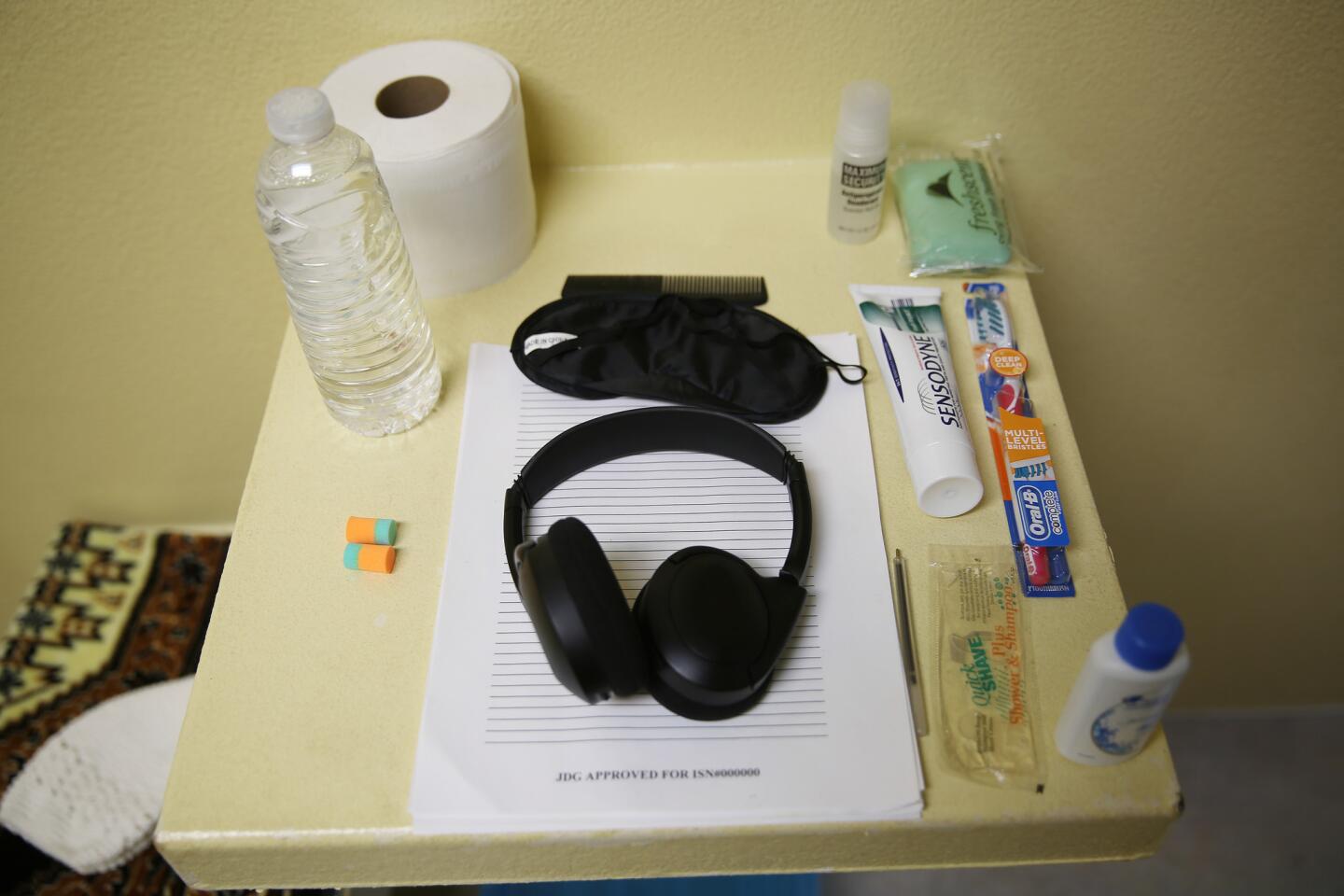What penal reform advocate Baz Dreisinger learned in two years visiting prisons around the world

A meeting is held for the restorative justice program at Pollsmoor Prison in Cape Town, South Africa.
- Share via
Some people travel the world to surf, to hike, to visit art museums or dine at Michelin-starred restaurants. Baz Dreisinger goes to prisons.
Dreisinger, an associate professor of English at the John Jay College of Criminal Justice in New York, spent two years on a pilgrimage to prisons in nine countries investigating a range of approaches to penal reform.
It was, by her account, a searing and occasionally uplifting experience.
She has written a book, “Incarceration Nations: A Journey to Justice in Prisons Around the World,” which is framed around her strong advocacy for penal reform. Dreisinger, who teaches college classes to inmates in New York, is a strong supporter of “restorative justice” programs that emphasize restitution and rehabilitation, and an impassioned critic of our current system of incarceration, which she believes has failed in its goal of “correction.”

Baz Dreisinger, the author of “Incarceration Nations: A Journey to Justice in Prisons Around the World”
Her trip took her to Rwanda, where the government fostered a system of gacaca courts that sought reconciliation between victims and perpetrators of genocide. She visited Norway, whose “open” prisons have no bars. She also visited South Africa, Uganda, Brazil, Thailand, Singapore, Jamaica and Australia.
Dreisinger is speaking about her book at the Central Library in downtown Los Angeles on Wednesday. Here are excerpts from a recent conversation:
Q: Tell me why you chose the countries that you chose to write about.
A: I wanted to choose countries that were sort of representative of particular issues. So, forgiveness and reconciliation [and] restorative justice in Rwanda and South Africa. Arts programs in Uganda and Jamaica. Solitary confinement in a federal supermax in Brazil. Incarceration of women in Thailand. Each country represented a particular issue.
Q: One of the things that you talk about is the influence that the United States has had on penal policy worldwide. Can you explain that a little bit?
A: I think that a lot of people don’t realize how the U.S. in many ways invented the modern prison system. And this historically goes back to the 19th century and the late 18th century, when the idea of using prison as a response to crime starts to take hold. And so we built what are considered the first two modern prisons, Eastern in Pennsylvania and Auburn in New York. That model then became quite famous around the world.
And that continues into the 20th century, and then globalization takes over. So you have things like privatization — a model, again, that the U.S. developed — and the supermax model, which now exists in a dozen countries and was essentially invented in the U.S.
Q: Rwanda is an especially interesting place. Describe what you found there.
A: I wanted to go to Rwanda to start the book by talking about the people we should be talking about when we talk about crime, which is the victims. And certainly Rwanda is a country that exists with this incredible number of victims who have lived through an atrocity. And Rwanda took a notoriously different approach to dealing with this atrocity, with the gacaca courts. This was 20 years ago, but I wanted to learn about the legacy of that in order to think about what would it look like on a grand scale for us to take an approach to crime that is not necessarily grounded in punishment but is grounded in reparations and restorative justice.
Q: Explain what restorative justice means.
A: Restorative justice is an approach to crime that puts the victim at the center and is concerned with how can we make restitution — how do we correct harm, rather than how do we punish offenders, in a nutshell.
And I think what I saw in Rwanda was an approach along those lines. And there’s no — I keep emphasizing it — there’s no utopia. Rwanda, politically, is a hotbed of problems underneath the surface. It’s not some perfect place where everybody is holding hands and singing “Kumbaya.” But I do think that there’s still that ethos, there is that legacy of the gacaca courts. I was in a peace village in Rwanda where the people were slaughtering people 20 years ago, and I literally was in a kind of community town-hall meeting there out in the fields, and watched a group of people stand up and sit down to signify that they had officially paid off their debt to the people that they’d harmed, and that they’d officially been welcomed back into the community. And so to witness things like that is confirmation that there is at least the possibility of another way, another paradigm.
Q: You found admirable programs in even some pretty grim places, but it seemed that you, by and large, came away disheartened by what you found in most systems. You end the book on a sort of hopeful note, but are you optimistic that there is change taking place?
A: Yes. I think doing this work you have no choice but to be optimistic because otherwise you just feel like it’s an uphill battle and you’re never going to win it. But I do think that there — both in the U.S. and globally — there is an increasing consciousness around the fact that something is wrong here. And the fact is, globally, to encounter people who are thinking the same way I do, whose commitment is as obsessive as mine, you can’t help but think that there’s a movement afoot and there’s change afoot.
Q: If there’s a model system that you found, it would be Norway. What can we learn from that?
A: I almost feel guilty blowing up Norway, with its homogeneous population, with its low crime rates and also with its wealth. But I think there are some simple things in its approach to corrections that are translatable. For instance, their staff is trained in philosophy, psychology, law and social work — not criminal justice and not defense and military tactics. And I think the open prison model and the idea of keeping people in prison connected to communities and families is translatable in one way or another. The concept of work-release is critical, and it barely exists in this country because we’re so afraid of risk. Work-release, educational release — we have these things, technically, as part of our system already, so it’s just using them more and kind of fine-tuning them.
Q: You disagree with a penal system that locks up a lot of people for a long time. But you talk in the book about the case of [mass killer] Anders Breivik in Norway, who one would think would be Exhibit A for the argument that some people should never see freedom again. Are there people who simply should never be in open society again?
A: Yes. Absolutely. There are people who are profoundly damaged and unsafe, and not fit for the world who need to be kept away for everyone’s sake. But I think that’s such a small piece of the prison system that it almost doesn’t make sense to talk about it. So people like to point to the Breiviks and the Charles Mansons and say, “Well what do we do about them?” Yes, we need a game plan for people like that. [But] I think when we design a system, we have to think about the bulk of people, and the bulk of people are not Charles Mansons and Breiviks.
Q: You mentioned Nelson Mandela’s quotation that essentially, prisons mirror their wider societies. How does the U.S. penal system reflect our society, and why do we incarcerate so many people than any other country?
A: That’s the million-dollar question. Well, I think our penal system reflects [that] we are a tremendously unequal society, rife with a legacy of institutional, systemic racism, and our system mirrors that. The prison system is a direct descendant of slavery and the black codes, and was about creating a labor force and about criminalizing poor folks and minorities. And that is our legacy. And also, people just take punishment for granted, morally speaking. You do harm to someone so you should be harmed.
Q: It is something that’s deep in our culture.
A: It’s an eye for an eye. On a fundamental level, we are teaching people to not do harm to others by doing harm to them. And that is, at its heart, hypocritical.
mitchell.landsberg@latimes.com
More to Read
Sign up for Essential California
The most important California stories and recommendations in your inbox every morning.
You may occasionally receive promotional content from the Los Angeles Times.





















